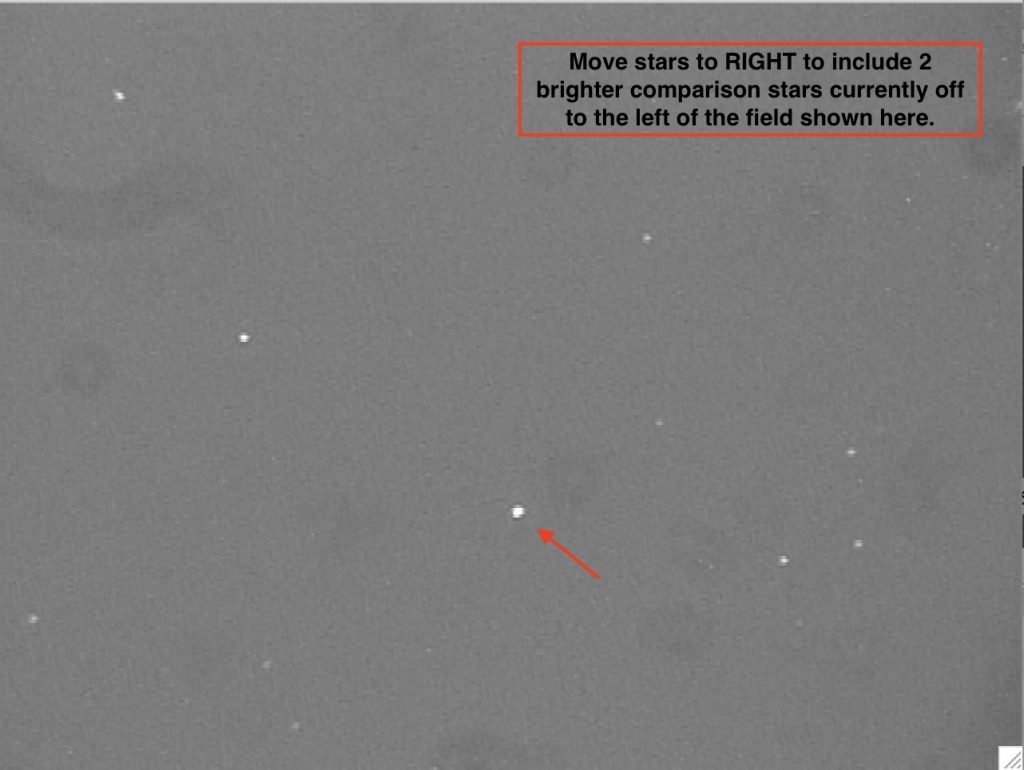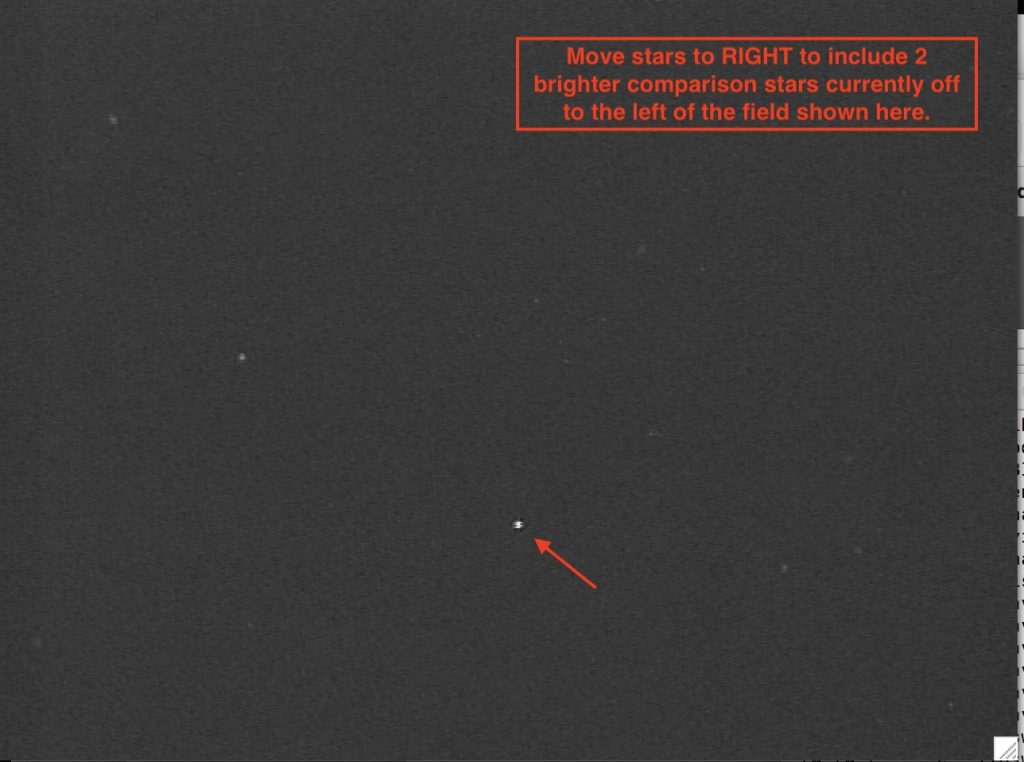Event Details
For all event details (including sense-up) visit: RECON Event Detail Page for 98BU48
This event is an early evening event, so much so that only teams south of Reno will have dark enough skies to record. And for those teams, they will have to align on the first bright star(s) to appear in the evening twilight before pointing the mag 9.8 target star in time to record. We recommend practicing for this event ahead of time during twilight hours to practice which stars you plan to use to align. Read on for our recommendations on how to address the challenges of this twilight occultation campaign.
Recommendations Specific to this Early Evening Event
This event is going to be challenging for many of our RECON teams, given bright the sky will be during the evening twilight hours when the event occurs. Below are some tips and suggestions to read through before the event:
- Give your team enough time to be completely set up and ready to align by 03:00 UT (8:00 PM PDT/MST). The sky will still be bright, but you will be ready to align as soon as the first bright stars come out. This will also give you time to record your position video before starting alignment.
- The best star to align on for this event is Regulus in the constellation Leo. Regulus will be high in the southern sky. A one-star alignment on Regulus followed by using GOTO RA-DEC should get you on the field. Use of a cell phone app and/or binoculars for finding Regulus may be helpful given twilight conditions. (Other bright stars you may notice are Arcturus and Spica to the east of Regulus or Sirius and Procyon to the west of Regulus. Of these, Arcturus is the next best alignment star besides Regulus. If you can clearly identify any of these before finding Regulus, you can try an Auto Two Star alignment, starting with one of these and then using Regulus as your second star for alignment and focusing.) We also recommend focusing on your last alignment star before slewing to field.
- The closest bright star to the field is Denebola, which is magnitude 2.1 and just 4 degrees from the target field (see Star Training Set on Event Detail Page). If you are not able to confidently recognize the star field after pointing to the target star, you can slew over to Denebola to confirm its location in the field and then return to the target field. The target star should be in roughly the same part of the field as was Denebola.
- The target star for this event is magnitude 9.8. That is why we are able to pursue this event despite the twilight conditions. However, it is also important that we record signal from the target star and at least one, preferably two, comparison stars. The star field images provided below show the target star in the center or bottom center of each field. Looking at the Star Chart on the Event Detail Page, you will notice that there are two additional bright comparison stars to the left of the field that are not recorded below. We recommend shifting the field so that the target star is to the middle right and these additional comparison stars are included in your field. Each site should use a sense-up rate of no slower than x16 and no faster than x4. That is, you should use sense-up of x4, x8, or x16. Your choice between these three will depend on sky conditions and how the field appears on your screen. You need to be able to see the target star and at one to two comparison stars in the field. Be sure to position the target and comparison stars off any hot pixels.
- If you do not have time before the event, it is also completely fine to record your position video AFTER the event has occurred rather than before. Remember to save your data files with 20190501_ prefix in a folder labeled 20190501. See Observation Protocol below.
- This will be a challenging event due to the limited amount of time you will have between aligning and focusing on Regulus and getting onto the target field at an appropriate sense-up. Each team should do your best, but don’t be disappointed if conditions turn out to be simply too bright (especially up north). On this difficult occultation, we are appreciative of your best efforts regardless the outcome.
Pre-Event Checklist
- Complete the RECON Campaign Signup Form for this event. Some participants have had trouble using Internet Explorer to sign up when there are more than one upcoming campaign. We recommend using an alternate internet browser. Submissions are updated hourly on our Signup Status Page.
- Plug in your power supply and RECON laptop to make sure both are fully charged well in advance of the event.
- Print this page as well as the Event Detail Page above and practice finding field prior to event.
- Be sure to practice on the target star field prior to the event!
Feel free to contact the RECON leadership team anytime by emailing tnorecon-org@mailman.boulder.swri.edu.
Observation Protocol
See our Full Campaign Observation Protocol Page for details on files to save:
- Position Video
- Event Video
- Sky Field Video
- Dark Field Video
You should configure VirtualDub to save files sequentially by using “Set Capture File” to save as C:/Users/RECON/Data/YYYYMMDD/YYYYMMDD_01. You should record the filenames and information about each file using the RECON Observation Logsheet.
Image of Star Field



Post-Event Details
Regardless of whether your team was able to collect data, we need you to Report Your Observations. This includes completing the Campaign Observation Report Form (below), saving an electronic version of your log sheet, and uploading both videos and observation log to SwRI in Boulder.
We need all teams to complete the RECON Campaign Observation Report Form within one week of the event. To view reports from teams from throughout the network, check out the Event Reporting Status Page.
